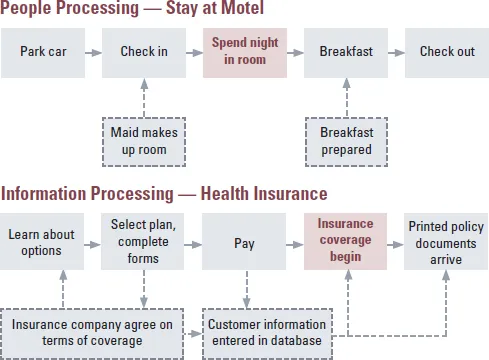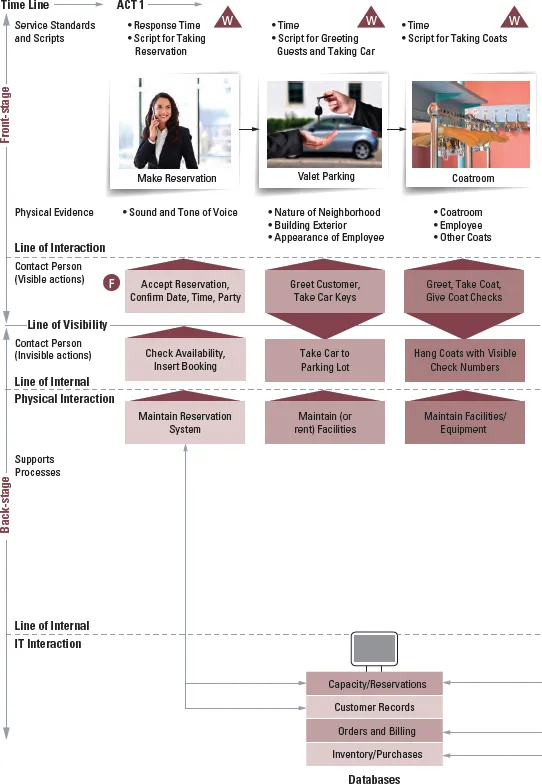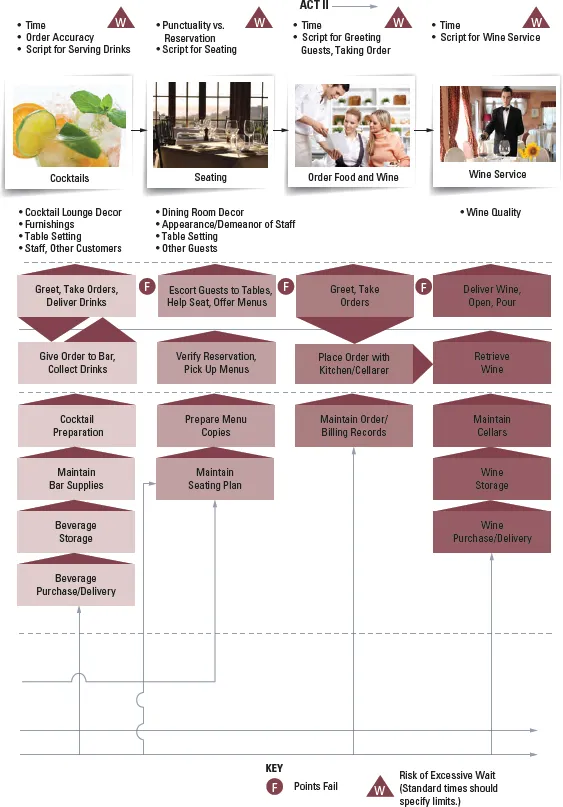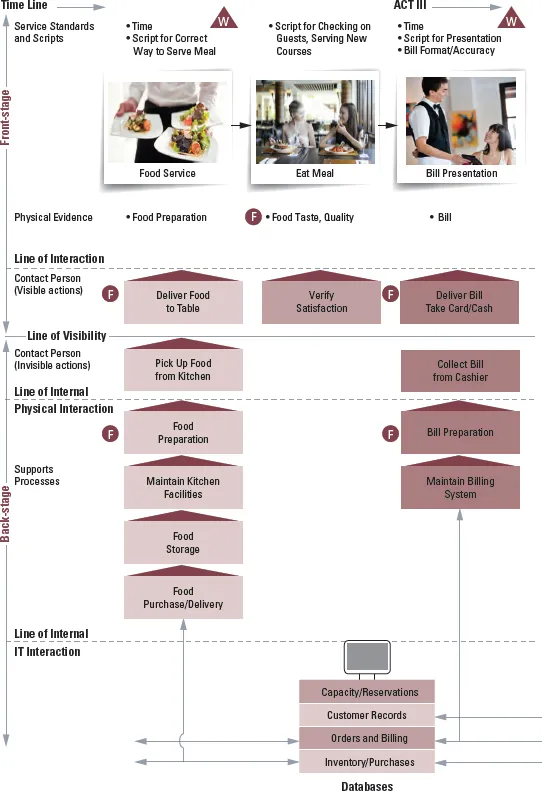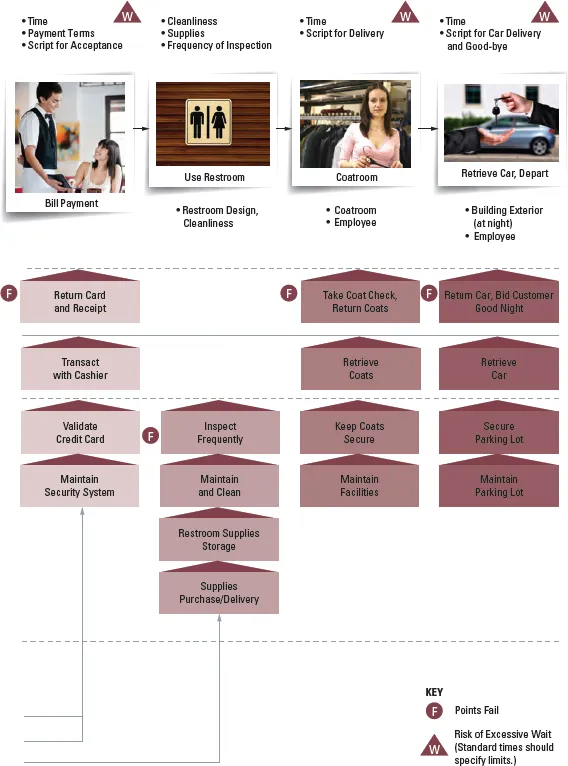![]()
VOLUME 6
Designing Customer Service Processes
Well done is better than well said.
Benjamin Franklin
one of the Founding Fathers of the US, 1706–1790
The new frontier of competitive advantage is the customer interface. Making yours a winner will require the right people and, increasingly, the right machines — on the front lines.
Jeffrey Rayport and Bernard Jaworski Professor at Harvard Business School, founder and chairman of Marketspace LLC; and Professor at Claremont Graduate University, respectively
Ultimately, only one thing really matters in service encounters — the customer’s perceptions of what occurred.
Richard B. Chase and Sriram Dasu
Professors at University of Southern California
Figure 1: Organizational framework
WHAT IS A SERVICE PROCESS?
From a customer’s perspective, services are experiences. From the organization’s perspective, services are processes that have to be designed and managed to create the desired customer experience. This makes processes the architecture of services. Processes describe the method and sequence in which service operating systems work, and specify how they are linked together to create the value proposition promised to the customers. Badly designed processes are likely to annoy customers because they often result in slow, frustrating, and poor quality service delivery. Similarly, poor processes make it difficult for front-line employees to do their jobs well, thus resulting in low productivity and increasing the risk of service failures. This volume will discuss how service processes can be designed and improved to deliver the promised value proposition (Figure 1).
DESIGNING AND DOCUMENTING SERVICE PROCESSES
The first step to design or analyze a process is to document or describe it. Flowcharting and blueprinting are two key tools used for documenting and redesigning existing service processes, and for designing new ones. To distinguish flowcharting and blueprinting from each other in a service context, a flowchart can be described as an existing process, often in a fairly simple form, while flowcharting is a technique for displaying the nature and sequence of different steps involved when a customer “flows” through the service process. It is an easy way to quickly understand the total customer service experience. Flowcharting the sequence of encounters customers have with a service organization yields valuable insights into the nature of an existing service. Figure 2 displays two simple flowcharts that demonstrate what is involved in each of the featured services.
Figure 2: Simple flowchart for delivery of motel service and health insurance service.
Blueprinting is a more complex form of flowcharting that specifies in detail how a service process is constructed, including what is visible to the customer, and all that goes on in the back-office. It is not an easy task to create a service, especially one that must be delivered in real time with customers present in the service factory. To design services that are both satisfying for customers and operationally efficient, marketers and operations specialists need to work together, and a blueprint can provide a common perspective and language for the various departments involved.
The term blueprinting originated from the ship designing and construction industry who used to capture the architectural drawings for a new building or a ship called blueprints, the reproductions of which have been traditionally printed on special paper on which all the drawings and annotations appear in blue. These blueprints show what the product should look like and the detail specifications to which it should conform. In contrast to the physical architecture of a building or a piece of equipment, service processes have a largely intangible structure that makes them all the more difficult to visualize. The same is also true of processes such as logistics, industrial engineering, decision theory, and computer systems analysis, each of which employs blueprint-like techniques to describe processes involving flows, sequences, relationships, and dependencies.
Service blueprints map customer, employee, and service system interactions. More importantly, they show the full customer journey from service initiation to final delivery of the desired benefit, which may include many steps and service employees from different departments. For example, in the context of a cable service, it may involve a sales agent, an installation team, a call-center employee to do the scheduling, and the back-office officers to set up the billing and payment; all are equally responsible for a trouble-free installation.1 Blueprints show the key customer actions, how customers and employees from different departments interact (called the line of interaction), the front-stage actions by those service employees, and how these are supported by backstage activities and systems. By showing inter-relationships among employee roles, operational processes, supplies, information technology, and customer interactions, blueprints can help bring together marketing, operations, and human resource management within a firm. Together, they can then develop better service processes, including defining service scripts and roles to guide interactions between staff and customers designing fail points and excessive customer waits out of processes; and finally, setting the service standards and targets for service delivery teams.
Developing a Service Blueprint
In order to develop a service blueprint, all the key activities involved in creating and delivering the service in question have to be identified in the first step, and then the linkages between these activities are specified. Initially, it is best to keep the activities relatively aggregated in order to define the “big picture”. This can be done by first developing a simple flowchart documenting the process from the customer’s perspective and then refine any given activity by drilling down to obtain a higher level of detail. In an airline context for instance, the passenger activity of “boards aircraft” actually represents a series of actions and can be broken down into steps such as “wait for seat rows to be announced, give agent boarding pass for verification, walk down the jet way, enter aircraft, let flight attendant verify boarding pass, find a seat, stow carry-on bag, and sit down”.
More details can be added next. Typical service blueprints have the following design characteristics that help to see how a blueprint should be developed2:
•Front-stage activities map the overall customer experience, the desired inputs and outputs, and the sequence in which delivery of that output should take place.
•Physical evidence of front-stage activities is what the customer can see and use to assess service quality.
•Line of visibility is a key characteristic of service blueprinting that distinguishes between what customers experience “front-stage”, and the activities of employees and support processes “backstage” where customers cannot see them, between the two lines of what is called the line of visibility. When a firm clearly understands the line of visibility, it is able to better manage physical and other evidence for front-stage activities to give customers the desired experience and quality signals. Some firms are too focused on operations and neglect the customer’s purely front-stage perspective. For instance, accounting firms often have detailed documented procedures and standards on how to conduct an audit, but may lack clear standards for hosting a meeting with clients, or for how staff members should answer the telephone.
•Backstage activities that must be performed to support a particular front-stage step.
•Support processes and supplies involve a lot of information. The information needed at each step in the blueprint is usually provided by information systems. For example, without the right information at the front-line staff’s fingertips, processes such as banking, online broking, or even borrowing a book from your university library could not be completed, and the service process could break down. Supplies required to be made available for both front and backstage steps are also necessary for many services. For example, restaurants need to have the supplies of the right fresh produce and wines; and car rental firms of vehicles, global positioning systems (GPSs) and child seats. Supplies are essential to deliver high quality core services.
•Potential fail points can be identified by managers when they develop a blueprint of the service process. Fail points are where there is a risk of things going wrong, resulting in diminished service quality. When managers are aware of these fail points, they are better able to design them out of a process (such as by using poka-yokes, as discussed later in this volume) and have backup plans (such as for service recovery, as discussed in Volume 11) for unavoidable failures (e.g., departure delays due to bad weather).
Figure 3: Long waiting lines indicate operational problems that need to be addressed.
•Identifying customer waits — Blueprints can also pinpoint stages in the process at which customers commonly have to wait (Figure 3), and where there are points of potentially excessive waits. These can then either be designed out of the process, or if not always possible, firms can implement strategies to make waits less unpleasant for customers (see Volume 7).
•Service standards and targets should be established for each activity to reflect customer expectations. They include specific times set for the completion of each task and the acceptable wait between each customer activity. Developing service blueprints gives marketing and operational personnel detailed process knowledge that can then be used to develop standards. The final service blueprint should contain key service standards for each front-stage activity, including the estimated time for the completion of a task and maximum customer wait times in between tasks. Standards should then be used to set targets for service delivery teams to ensure that service processes perform well against customer expectations.
Blueprinting the Restaurant Experience: A Three-Act Performance
To illustrate how the blueprinting of a high-contact, people-processing service can be done, we examine the dinner experience for two at Chez Jean, an upscale restaurant that enhances its core food service with a variety of other supplementary services (Figure 4). A rule of thumb in full-service restaurants is that the cost of purchasing the food ingredients represents about 20% to 30% of the price of the meal. The balance can be seen as the fees that customers are willing to pay for a great dining experience that includes “renting” tables and chairs in a pleasant setting, the food preparation services of expert chefs and their kitchen equipment, and serving staff to wait on them in the dining room.
Figure 4: Blueprinting a full-service restaurant experience.
Most service processes can be divided into three main steps:
1.Preprocess stage where the preliminaries occur, such as making a reservation, parking the car, getting seated, and being presented with the menu.
2.In-process stage where the main purpose of the service encounter is accomplished, such as enjoying the food and drinks in a restaurant.
3.Post-process stage where the activities necessary for the closing of the encounter happens, such as getting the check and paying for dinner.
It is important to differentiate these stages as customers tend to have different objectives and sensitivities in these stages. For example, research in the context of restau...


